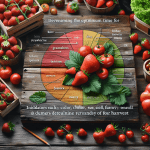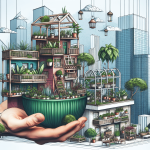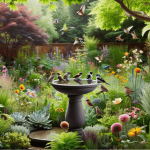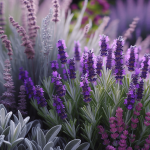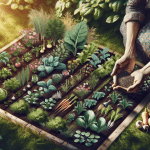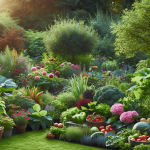This post may contain affiliate links. As an Amazon Associate, we may earn commissions from qualifying purchases.
You’re excited to start your container garden, but standing in front of those endless bags of soil mix at the garden center can be overwhelming. In “How Do I Choose The Right Soil Mix For Container Gardening?”, you’ll discover the essential tips and tricks to ensure your plants thrive in their pots. From understanding the composition of different soil mixes to considering the specific needs of your plants, this article guides you step-by-step through making the best choice for your container garden. How do you choose the right soil mix for container gardening? Ah, that’s the million-dollar question, isn’t it? One minute you’re shopping for your favorite plants or envisioning your container garden blooming with life, and the next, you’re standing in front of a dizzying array of soil options, scratching your head.
Your choice in soil mix can make or break your gardening experience, so it’s important to get it right. Luckily, you don’t have to be a soil scientist to figure this out. With a little guidance and a pinch of humor, you’ll be on your way to creating the perfect soil conditions for your container garden.
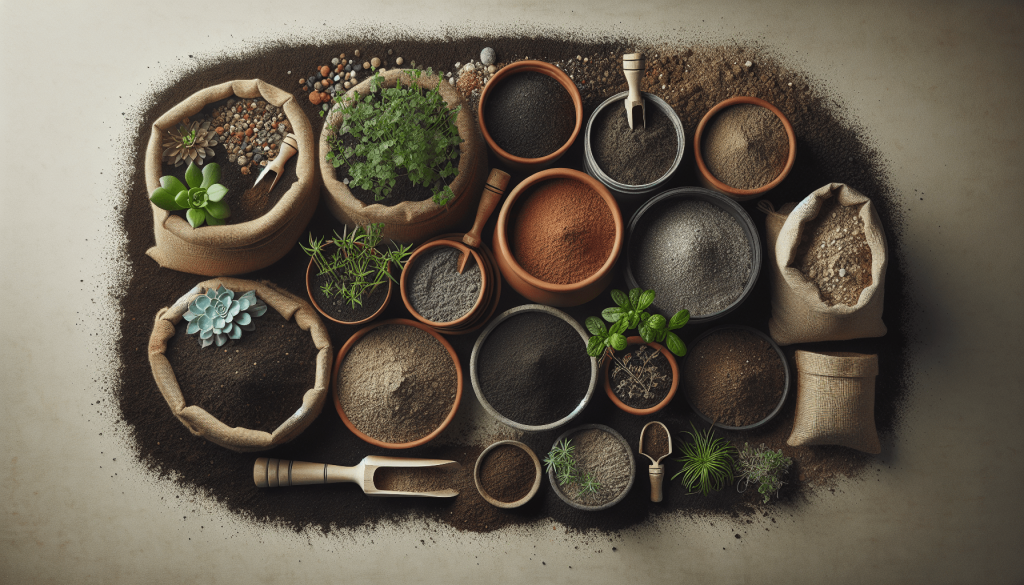
Why Soil Mix Matters
You might be wondering, why can’t I just scoop some dirt from my backyard and call it a day? Well, container gardening is a whole different ball game. The soil mix you choose directly impacts the health and happiness of your plants. Not only does the right mix provide essential nutrients, but it also ensures proper drainage and aeration.
The Importance of Drainage and Aeration
Imagine wearing a pair of too-tight shoes all day. Not pleasant, right? That’s how your plant roots feel when they’re suffocating in poorly drained soil. Container soil needs to balance water retention and drainage so that roots have access to moisture without standing in water. Aeration ensures roots get enough oxygen, promoting better health and growth.
Essential Nutrients
Essential nutrients are to plants what a balanced diet is to you. While plants can adapt to less-than-ideal soil, giving them the best possible environment can make all the difference between surviving and thriving.
Different Types of Soil Mixes
Not all soil is created equal, and that’s a good thing because diversity in soil types allows you to choose one that fits your specific needs. But how do you decide? Let’s break it down.
Potting Soil
Potting soil is your all-purpose go-to. It’s usually a blend of peat moss, bark, and perlite or vermiculite. Some mixes also include added fertilizers. This kind of soil is designed for most indoor and outdoor potted plants.
Pros:
- Convenient and readily available.
- Well-balanced for most plants.
Cons:
- Can be pricier than garden soil.
- Needs regular replacement.
| Ingredient | Purpose | Common Source |
|---|---|---|
| Peat Moss | Moisture retention | Sphagnum peat bogs |
| Bark | Weight reduction, aeration | Pine or fir bark |
| Perlite/Vermiculite | Improved drainage | Volcanic glass |
Garden Soil
Garden soil is just a bagged form of dirt. It’s inexpensive and often enriched with compost or manure. However, it’s not recommended for containers because it’s dense and doesn’t drain well.
Pros:
- Budget-friendly.
- Good for outdoor flower beds and veg patches.
Cons:
- Poor drainage.
- Heavy and compact.
Soilless Mixes
Soilless mixes don’t contain any soil but instead use components like coconut coir, perlite, and bark. These mixes are excellent for specialized gardens like orchids or succulents.
Pros:
- Superior drainage.
- Sterile and disease-free.
Cons:
- Some mixes can be expensive.
- Not ideal for all plants.
Specialty Mixes
These are custom-made mixes designed for specific plant needs. For example, cacti and succulents require well-draining soil, while orchids thrive in bark-based mixes.
Pros:
- Tailored to specific plants.
- Easy to use.
Cons:
- Can be pricey.
- Limited availability.
Factors to Consider When Choosing Soil Mix
Choosing the right soil mix isn’t just a matter of picking up a bag labeled “potting soil.” There are a few more factors to consider to ensure your plants flourish.
Plant Type
Different plants have different needs. Cacti and succulents, for instance, prefer a well-draining mix, while ferns and tropical plants need moisture-retentive soil.
Container Type
Your container material and size will also impact soil choice. Terra cotta pots, for example, are porous and dry out quickly, so you’ll need soil that retains moisture. Plastic pots, on the other hand, retain moisture longer, so a well-draining mix is essential to prevent root rot.
Sun Exposure
Plants in full sun will dry out faster and may require a soil mix with better moisture retention. Those in shaded areas are less prone to drying and may need a mix with enhanced aeration.
Watering Habits
If you’re a forgetful waterer, a soil mix that retains moisture will be your best friend. For those who tend to overwater, a well-draining mix is crucial.
DIY Soil Mix Recipes
So, you’re feeling a bit adventurous and want to mix your own soil? Not a problem! Here are some DIY recipes to get you started.
All-Purpose Potting Mix
Perfect for most indoor and outdoor plants.
Ingredients:
- 2 parts peat moss or coconut coir
- 1 part perlite or vermiculite
- 1 part compost
Instructions:
- Combine all ingredients in a large container.
- Mix thoroughly.
- Store in an air-tight container until use.
Cacti and Succulent Mix
Ideal for your arid-loving plants.
Ingredients:
- 3 parts potting soil
- 2 parts coarse sand or poultry grit
- 1 part perlite
Instructions:
- Mix all ingredients in a large container.
- Ensure even distribution.
- Store in a cool, dry place.
Orchid Mix
Perfect for orchids and other epiphytic plants.
Ingredients:
- 4 parts fir bark
- 1 part charcoal
- 1 part perlite
Instructions:
- Combine ingredients.
- Mix well.
- Store in an air-tight container until use.
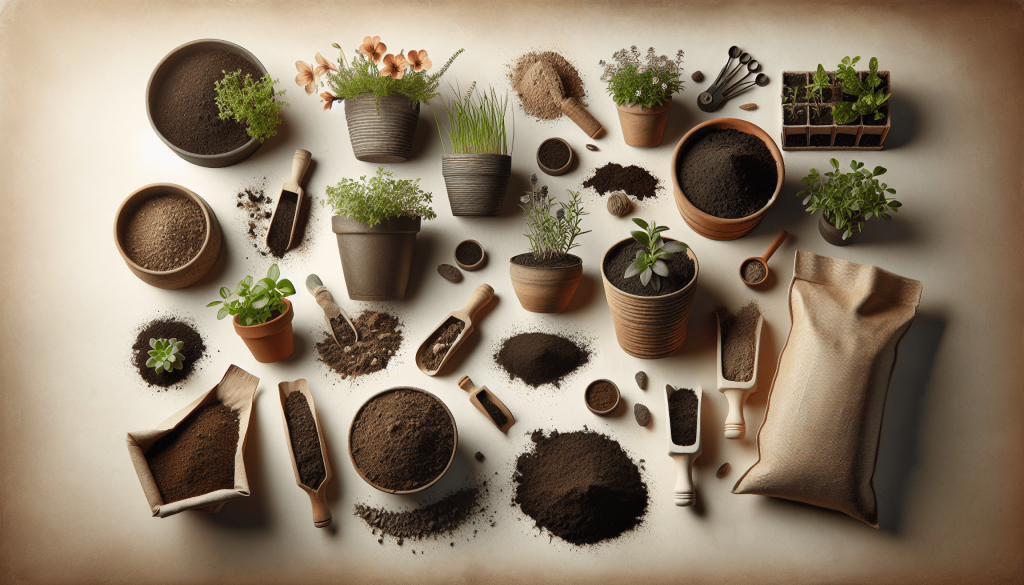
Adding Nutrients: Fertilizers and Amendments
Even the best soil mix will eventually require some added nutrients to keep it fertile and productive. Let’s explore how to give your plants the nutritional boost they need.
Organic Fertilizers
Organic fertilizers like compost, worm castings, and fish emulsion are fantastic for organically-minded gardeners. They release nutrients slowly and improve soil structure.
Synthetic Fertilizers
Synthetic fertilizers offer immediate nutrient availability but can accumulate salts in the soil over time. They’re effective but may require careful application as per package instructions.
Soil Amendments
Soil amendments like lime for pH correction, gypsum for clay soils, and organic matter for improving texture can significantly enhance soil quality. Think of them as little tweaks you can make to create the perfect growing conditions.
Understanding pH and Adjusting Soil Acidity
Soil pH is another critical factor in plant health. Most plants prefer a slightly acidic to neutral pH (6.0-7.0), but some, like blueberries and azaleas, thrive in more acidic conditions.
How to Test Soil pH
You can test your soil pH using an at-home kit or a digital meter. Many garden centers also offer testing services. Based on the results, you can adjust the pH by adding sulfur to lower alkalinity or lime to raise acidity.
Tips for Maintaining Soil Health
Once you’ve chosen or mixed the perfect soil, your work isn’t done. Maintaining soil health is an ongoing task.
Regular Monitoring
Periodically check your soil for compaction, water retention, and nutrient levels. This will help you catch any issues early before they become significant problems.
Changing Soil
Even the best soil mix needs to be changed periodically. Over time, soil breaks down and loses nutrients, leading to poor plant health. A good rule of thumb is to refresh your soil every 1-2 years.
Mulching
Adding a layer of mulch on top of your soil can help retain moisture, reduce weeds, and improve soil structure over time.
Troubleshooting Common Soil Problems
No journey is without its bumps in the road, and container gardening is no exception. Here are some common soil issues and how to fix them.
Poor Drainage
If your soil isn’t draining well, you can improve aeration by adding perlite, coarse sand, or gravel.
Nutrient Deficiency
Yellowing leaves or stunted growth often indicate nutrient deficiencies. Supplement your soil with organic or synthetic fertilizers based on the specific deficiency.
| Deficiency | Symptom | Solution |
|---|---|---|
| Nitrogen | Yellowing leaves | Blood meal, fish emulsion |
| Phosphorus | Dark, purplish foliage | Bone meal, rock phosphate |
| Potassium | Yellow or brown leaf edges | Potash, wood ashes |
Pest Infestation
Pests like fungus gnats can thrive in poorly drained or overwatered soil. Ensure proper soil moisture and consider natural insecticides if needed.
Conclusion
Choosing the right soil mix for your container garden might seem complicated, but once you dig into the details, it becomes more manageable. By understanding the needs of your plants and considering factors like container type, sunlight, and watering habits, you can create the perfect soil environment. Whether you opt for a ready-made mix or venture into DIY soil mixing, the key is to monitor and maintain your soil’s health regularly.
Now that you’re armed with all this knowledge, you’re ready to tackle container gardening with confidence. So roll up those sleeves, grab your trowel, and get to planting. Your green-thumbed dreams are just a soil mix away!

